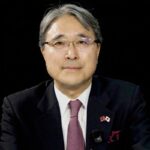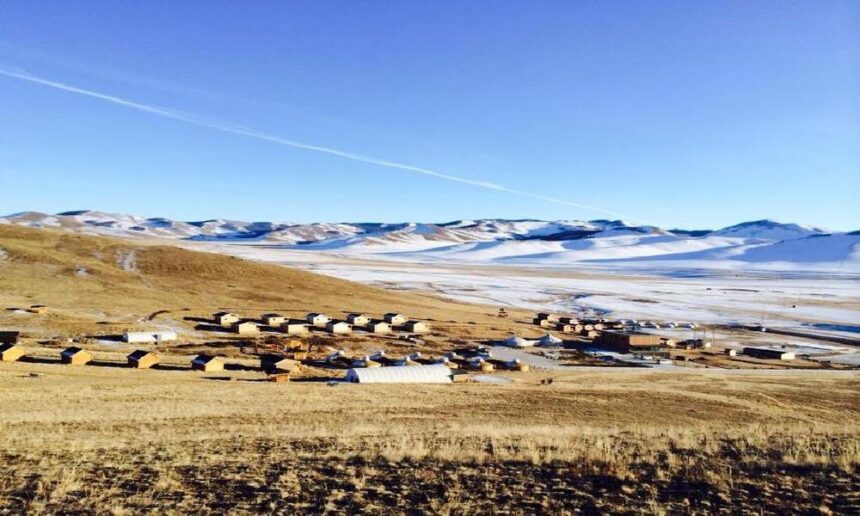Our countryside is getting emptier as people continuously flood to the city. Half of our population are living in Ulaanbaatar today, and half of the rest have made aimag and soum centers home. Barely ten percent of Mongolians are actually practicing animal husbandry, which is the root of our culture and traditions. Our total livestock headcount is closing in on 70 million, 86 per cent of which are comprised of sheep and goats equally. Our pasture carrying capacity keeps being exceeded while desertification expands. Our cities cannot fit the people in, and our pasture cannot hold in the livestock. Schools in Ulaanbaatar have exceeded their capacity in terms of the number of students while soum schools are struggling to fill their classrooms.
Although everyone talks about developing the countryside and MPs keep making promises, what is really happening is that Mongolia’s rural areas currently have the highest poverty and unemployment rates. We need to determine and study the key reason why government policies are not helping remove the gap between rural and urban development, and discuss what our next actions should be.
New Soum project
Mongolia has 331 soums, and 170 of them have less than 3,000 people, 100 have 3,000-5,000, and 28 have more than 5,000. In 2013, the government started a project to develop Buutsagaan and Bayanlig soums in Bayankhongor aimag and Dornogovi’s Zamiin-Uud soum as model soums. The implementation of this ‘New Soum’ project saw a two-story hospital with 20 beds, a high school with a capacity of 640 students, a kindergarten for 150 children, and a dormitory for 180 students built in Buutsagaan and Bayanlig soums. These projects along with construction of the engineering network, pedestrian paths, roads, steam boilers, and electric substations cost 22 billion MNT in total. Also, the project commenced construction of a school with a capacity of 960 students and a hospital with 100 beds in Zamiin-Uud soum of Dornogovi aimag.
In 2014, the government made a decision to implement the project in 16 other soums and had allocated each an investment of 5 billion MNT to be spent on public facilities and engineering networks. However, it did not take long for these projects to be stopped, because the government was replaced.
The assumption was that if high schools, inter-soum hospitals, and public facilities were built in soums and connected to engineering infrastructure, people who are living in rural soums would have a better livelihood and higher chance of staying there, hence bringing down the overflooding of population and rate of migration.
New Countryside project
With the objectives of developing agricultural production and growing the middle class population, MP J.Bat-Erdene has been implementing the ‘New Countryside’ project since 2016. The project slogan is ‘If the household is wealthy, the country will be.’ He is aiming to work together with specialized organisations of SME owners and farmers in specific soums of some aimags, and leverage government involvement in resolving the issues they face.
Even though MP J.Bat-Erdene was liaising with relevant ministries to have some funding reflected in the 2018 public budget to support the countryside SMEs and farmers, J.Erdenebat’s cabinet resigned. Today MP J.Bat-Erdene has been nominated for the Minister of Road and Transport Development. It has now become uncertain if the funding needed for the New Countryside project would be supported by the parliament for inclusion in the 2018 public budget.
New Community Movement
The New Community Movement, which has been the core of South Korea’s rapid development, is successfully being implemented in over 40 less developed countries in the world. The general assembly of this movement is currently taking place in Busan. It has been nearly 10 years since a few people started Mongolia’s New Community Movement. With nearly 10,000 members, Mongolia’s New Community Movement currently has a branch in every aimag, and implemented many projects with a tangible outcome – such as building roads, greenhouses, and libraries – in many soums and districts with support from our Korean friends.
However, it is still not a widespread activity and a substantial impact on countryside development is missing because of the current circumstances of our society, dominated by an entitlement mentality that seeks to receive things for free, without being involved. Also, the movement is not always being fully supported by local and central government.
Due to unsatisfactory outcomes and the ineffectiveness of government activities intended to bring about rural development, people are increasingly moving away from soum centers to go live in aimag centers or the capital city. What conclusions can be drawn on the reoccurring hurdles blocking Mongolia’s countryside development and the continuous freezing of projects and initiatives?
Solution is New Bagh
Scholars attest that the secret to South Korea’s rapid development is that everyone believed in a common cause and took part. The country was going through a tough time of hunger 40 years ago, and today they are one of the largest economies in the world and the sixth biggest exporting nation. Their GDP per capita has increased a hundredfold from 300 USD to 30,000 USD. This rapid economic growth is referred to as the Miracle on the Han River – a testament that countries can overcome poverty and achieve prosperity only if everyone takes part and works together with each other.
The underlying reason why Mongolia’s projects and initiatives such as New Soum and New Countryside keep hitting roadblocks is that our government makes decisions without involving the relevant soum people and just provides some company to build a school or a kindergarten. Poverty cannot be overcome when people are given things and not involved. Substantial changes occur only when the people decide for themselves, work together, and receive necessary support from the government.
The beginning of development in society is closely tied with the capability of people to work together. Collaboration and effective management of economic incentives, combined with required financial and material support, yield good outcomes and significant changes. When this happens, people grow in confidence and passion, and improve their quality of life by continuing to work together.
The core of Mongolia’s rural development is bagh. A New Bagh Movement can be developed by bagh households working with each other on land ownership, pasture and water use, paying taxes if livestock headcount exceeds a specific number (half of the collected taxes then can go back to the bagh), and collaborating on business ideas.
The core of Mongolia’s urban development is the khoroo. All these attempted projects in the capital city prove that it is impossible to turn the ger district into apartment blocks and build required infrastructure without people’s ownership and involvement. People need to work together to swap their land for apartments, receive lifelong learning, and keep improving their neighborhood khoroo.
It is time for Mongolia to hone our policy on developing the countryside, learn from the world, and completely change the way we do things.
Busan, 2017.10.18
Trans. by B.Amar












